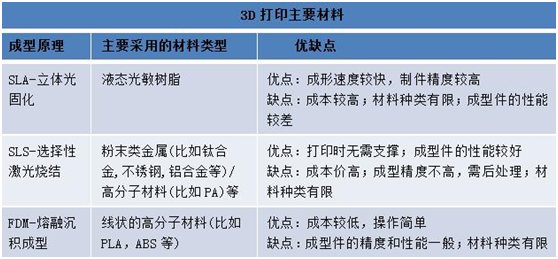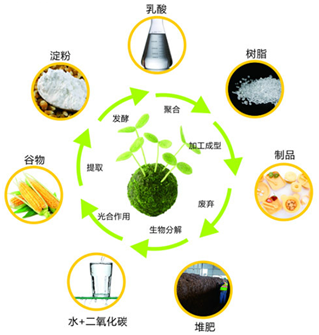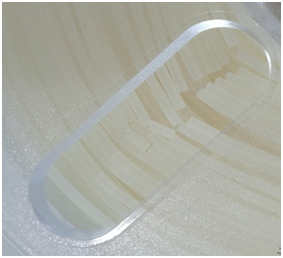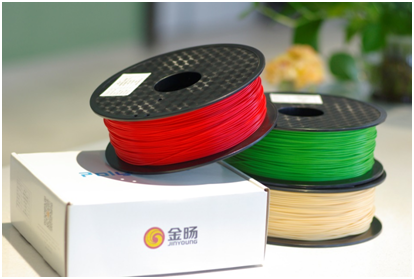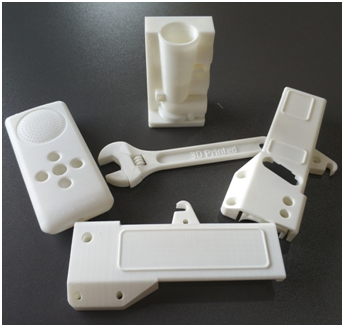How are the technical challenges of 3D printed materials that have plagued global customers overcome?
3D printing, also known as additive manufacturing, is a technology that builds three-dimensional solids on a layer-by-layer basis based on digital model files. It has a profound impact on traditional process flow, production line, factory model, and industrial chain combination. An emerging technology that is rapidly evolving in the manufacturing field is called "manufacturing technology with industrial revolutionary significance." At present, 3D printing has been widely used in school education, product design, medical, aviation and other fields. At present, a new round of scientific and technological revolution and industrial revolution are emerging around the world. All countries in the world have taken additive manufacturing as a new growth point for future industrial development, and promoted additive manufacturing technology and information network technology, new material technology, and new design concepts. Accelerate integration. The global manufacturing and consumption model has begun to reshape, and the additive manufacturing industry will usher in tremendous development opportunities. Compared with developed countries, China's additive manufacturing industry still has problems such as the lag of key technologies, insufficient innovation capability, the high-quality reliability of high-end equipment and parts, and the need to improve the breadth of applications. At present, China attaches great importance to the additive manufacturing industry and regards it as the development focus of "Made in China 2025". In order to implement "Made in China 2025", promote the rapid and sustainable development of China's additive manufacturing industry, and accelerate the cultivation of new development momentum of the manufacturing industry, in November 2017, the National 12 ministries and commissions jointly formulated the "Incremental Manufacturing Industry Development Action Plan (2017) - 2020), the first point of the basic principles and key tasks in the plan is to strengthen innovation and improve innovation. PLA (Polylactic acid) , Chinese name polylactic acid, also known as polylactide, semi-crystalline thermoplastic aliphatic polyester synthesized from starch of plants (such as corn and sugar cane), Ï is about 1.24g/cm 3 , Tg is about 60 ° C, Tm is about 175 ° C, mold molding shrinkage is 0.2% to 0.4%, biodegradable, and its degradation products are CO 2 and H 2 O, and its waste will not The environment is polluted, and the life cycle of PLA materials is shown in Figure 1. PLA materials can be processed by traditional extrusion, blow molding, injection molding, 3D printing, etc., and are widely used in tableware, packaging, 3D printing and other fields. At present, the principle of 3D printing and forming mainly includes FDM type/SLS type/SLA type. 3D printing is mainly composed of printer and materials. The printer is an auxiliary forming tool, and material is the key. The limitation of material type and performance is an important factor affecting the development of 3D printing, and it is also the current development of 3D printing materials . The following mainly introduces the PLA materials used in FDM printing. PLA materials are currently popular materials and are the most used materials in FDM printing, accounting for more than 70%. Figure 1 PLA life cycle diagram The reason why PLA materials can be printed by FDM is that the dimensional stability of the printed parts is better because of the lower shrinkage rate, such as the fact that the molded parts are free from warping and cracking; the second is because of environmental protection. , including synthetic monomer sources and biodegradability, so that there is no pungent odor when printing, and its waste can be degraded into objects that are not polluting to the environment; third, because of its weak crystallization ability, the material The cooling setting speed at the time of printing discharge matches the feeding speed of the printer, so that the printing does not block the nozzle of the printer. However, due to the shortcomings of the poor toughness of PLA materials, a series of problems arise in the printing process of PLA materials. For example, PLA materials are extruded into lines, and after 2 months of placement, there will be brittle fracture or unstable toughness, which leads to the phenomenon of line breakage or automatic fracture during the printing process. The automatic fracture is shown in Figure 2. Shows that it seriously affects normal printing. Figure 2 Automatic line break diagram The poor toughness of PLA line materials is the most common and serious problem on the market. In response to this shortcoming, many companies are undergoing modification optimization, but there has still been no significant improvement. 3D printer technology itself is an innovative molding manufacturing technology, but if the material is not innovative, it is difficult to meet the different needs of customers, and ultimately will lead to slow development or termination of the 3D printing industry. The toughness of the material is poor. The general thinking is to directly toughen and modify the impact strength value. This is also the general principle of traditional modification. However, after many tests, the 3D printed PLA material is improved by the modification of the impact strength value. Even after several times or more, after being produced into a line from the modified particles, if it is left for more than 2 months, the phenomenon of brittleness or unstable toughness still occurs. A more important issue is the large addition of toughening agents, which on the one hand can cause warpage of the printed parts. This is because the addition of toughening agents increases the shrinkage of the material and on the other hand affects the material. The fluidity of the printed material has to be increased beyond the original printing temperature of the PLA material. Jinhao 3D R&D team first carried out a large amount of data search and research on the molecular structure and degradation principle of PLA materials, and combined with the basic conditions that must be satisfied by 3D printing and forming a special development plan, we developed the plan ideas. as follows: First, the choice of toughener 1. From the aspect of molecular structure: the toughening agent structure should have a group which can react with the group contained in PLA, so that the toughening effect is more obvious. 2 , from the aspect of biodegradation: the toughening agent structure does not contain as much as possible water-absorbing groups, because moisture will promote the degradation of PLA materials, and ultimately accelerate the rate of decay of material toughness. Second, the choice of degradation inhibitors From the viewpoint of molecular structure: an auxiliary agent having a chain extender function or an auxiliary agent capable of blocking a PLA functional group is added. Third, reduce the shrinkage of the choice of additives 1. Considering the choice of toughening agent: the shrinkage rate of the toughening agent itself should be close to that of the PLA material. 2, filler considerations: on the one hand, the microscopic shape of the filler is preferably spherical, so that while reducing the shrinkage of the modified material, the effect of isotropic shrinkage can be achieved; on the other hand, the filler can not have obvious Promote the role of crystallization, otherwise the cooling rate will increase, which may cause the material to clog the nozzle during printing. Fourth, from the production of 3D printing standard lines All additives can not be added too much, otherwise it will affect the stability of the wire diameter during line production, such as the tolerance of the line size is too large, and ultimately can not meet the normal delivery of the printer. Five, from the appearance of printed molded parts All additives, especially fillers, must be added in an appropriate amount. Otherwise, the surface precision of the printed material of the line material deteriorates due to the dispersion problem of the filler, such as rough surface and obvious particles. Based on the above ideas, our special program, after many trials and customer verification, finally successfully developed a high toughness retention PLA material, which is also a very innovative material on the market, and has overcome the 3D printed PLA line. The technical problem of brittle material has really solved the long-standing problem of 3D printing customers. This innovative technology is the first in the world. After the actual verification, the following results are obtained: the high-toughness retention rate of the PLA material, which is placed in the air for more than 8 months, does not appear brittle or unstable toughness. This material has a high toughness retention rate. Good printing effect, and solve the problem that the printing support is difficult to remove; at the same time, it can also directly replace the white material which is partially added with titanium dioxide. Because this material does not contain difficult-to-disperse titanium dioxide, the appearance and precision of the printed part is very good, which is an important reason why it is favored by customers. The lines and prints produced by Jinhao PLA materials are shown in Figure 3. Shown Figure 3 PLA print lines and print molding Due to the low entry barriers for the production of FDM-3D materials, many PLA material producers have entered the industry, and the homogenization problem has become more and more serious, but they have always lacked a good product that customers are really satisfied with. Jinhao 3D R&D team is based on the pain points of this industry. Starting from customer needs and taking technology innovation as the core, after a long period of preliminary research and demonstration, we have conceived R&D innovation ideas, formulated R&D plans, and repeated trials. And customer verification, and finally develop a good material with technological leadership and fully meet customer needs. Squeeze Golf Ball,Custom Stress Ball,Squeeze Diamond Toy,Squeeze Stress Ball Chic Products (China) Co., Ltd. , https://www.chic-gifts.com